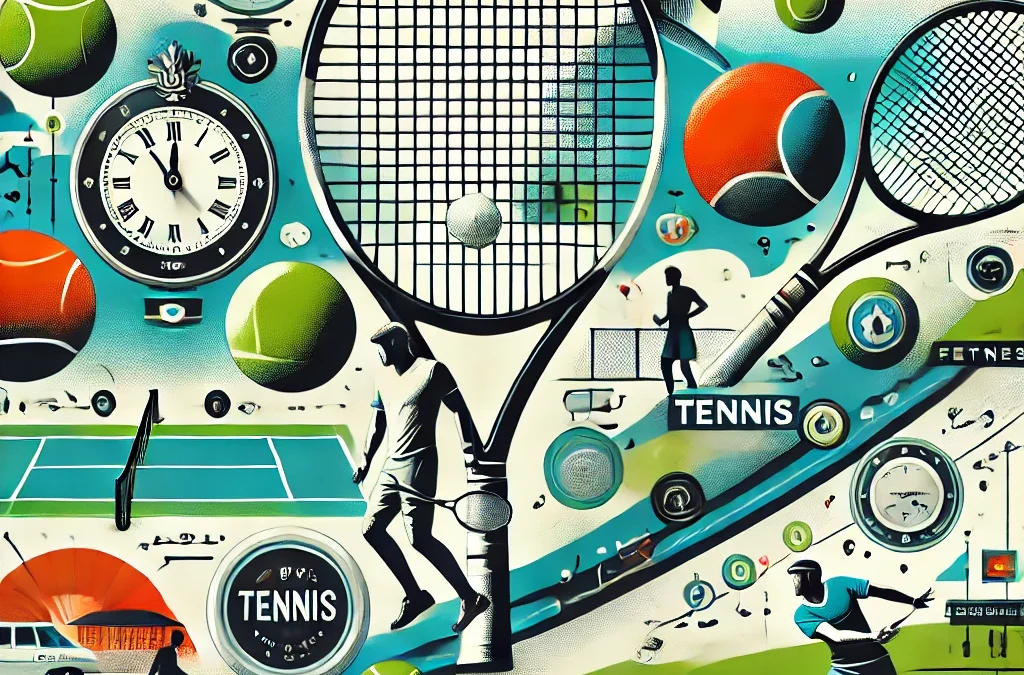The Evolution of Tennis: From Lawn Games to Global Phenomenon
Tennis is one of the most beloved sports worldwide, blending physical agility, mental toughness, and strategic finesse. From its humble beginnings on manicured lawns to its current status as a multi-billion-dollar global industry, tennis has transformed in ways that continue to captivate players and fans alike. Let’s dive into the fascinating history, cultural impact, and enduring appeal of this dynamic sport.
The Origins: Lawn Tennis and Royal Courts
The roots of modern tennis can be traced back to 12th-century France, where a game called jeu de paume (game of the palm) was played. Players hit a ball back and forth using their hands before racquets were introduced in the 16th century. This version of tennis gained popularity in royal courts, particularly during the reign of King Henry VIII, who was an avid player.
Fast forward to the 19th century, tennis began to resemble the game we know today. In 1873, Major Walter Clopton Wingfield patented the rules for “lawn tennis,” which was played on grass courts with a net. The All England Lawn Tennis and Croquet Club, established in 1877, hosted the first-ever Wimbledon Championship, cementing tennis as a formal competitive sport.
The Game’s Evolution: Rules, Equipment, and Playing Surfaces
As tennis gained popularity, the game evolved to adapt to new technologies and changing audience expectations. Here are some of the key milestones in its development:
1. The Birth of Open Tennis
Until 1968, professional players were banned from competing in major tournaments, which were reserved for amateurs. The advent of the Open Era in 1968 allowed professionals and amateurs to compete together, leading to an explosion in the sport’s popularity. Wimbledon became the first Grand Slam to embrace the Open Era, followed by others.
2. Equipment Innovations
- Racquets: The wooden racquets of the early 20th century gave way to lighter, more durable metal and composite materials in the 1970s and 1980s. Today’s racquets are designed for power, precision, and spin, giving players an edge like never before.
- Tennis Balls: Originally made from leather and stuffed with wool, tennis balls evolved into pressurized rubber models. The yellow tennis ball was introduced in the 1970s to improve visibility for TV broadcasts.
3. Diverse Surfaces
Tennis is unique in that it’s played on three primary surfaces—grass, clay, and hard courts—each offering a distinct playing style:
- Grass: Fast-paced, favoring serve-and-volley players like Roger Federer.
- Clay: Slower with high bounce, requiring stamina and precision, as seen in Rafael Nadal’s dominance at Roland Garros.
- Hard Courts: A balanced surface offering equal opportunity for power and strategy.
The Golden Eras of Tennis
The Borg-McEnroe Rivalry
The late 1970s and early 1980s marked the rise of thrilling rivalries, none more famous than Björn Borg and John McEnroe. Borg’s icy demeanor and baseline precision clashed with McEnroe’s fiery temper and net-rushing style, creating unforgettable matches like the 1980 Wimbledon final.
The Big Three Dominance
In the 21st century, Roger Federer, Rafael Nadal, and Novak Djokovic have elevated tennis to unprecedented heights. Collectively winning over 65 Grand Slam titles, the “Big Three” have captivated audiences with their contrasting styles:
- Federer’s elegance and versatility.
- Nadal’s relentless physicality and clay-court dominance.
- Djokovic’s unmatched return game and mental resilience.
Their rivalry has redefined what it means to be a tennis great, inspiring the next generation of players.
The Rise of Women’s Tennis
Women’s tennis has evolved into one of the most popular and competitive sports globally, thanks to trailblazers like Billie Jean King, Martina Navratilova, and Steffi Graf.
- Billie Jean King: Her victory in the 1973 “Battle of the Sexes” against Bobby Riggs wasn’t just a tennis triumph—it was a cultural milestone for gender equality in sports.
- Serena Williams: With 23 Grand Slam singles titles, Serena has redefined athleticism and dominance, inspiring millions with her power, precision, and grace.
Today, women’s tennis features rising stars like Iga Świątek, Coco Gauff, and Aryna Sabalenka, who are pushing the boundaries of the game further.
Tennis in the Digital Age
Tennis has embraced the digital age, using technology to enhance the player and fan experience:
- Hawk-Eye Technology: Introduced in 2006, Hawk-Eye allows for instant replay and line-call challenges, adding a new layer of fairness and excitement.
- Data Analytics: Players and coaches now use advanced data to analyze opponents’ weaknesses, optimize strategies, and track performance.
- Streaming and Social Media: Platforms like YouTube, Instagram, and TikTok have brought tennis closer to fans, showcasing behind-the-scenes moments, tutorials, and highlights.
Why Tennis Remains Timeless
1. Individual Brilliance
Unlike team sports, tennis puts individuals in the spotlight. Every serve, rally, and point reflects the player’s skill, strategy, and mental toughness. This one-on-one nature creates drama and emotional connection, keeping fans invested.
2. A Global Sport
With tournaments spanning every continent, tennis unites players and fans from diverse cultures. Grand Slams like the Australian Open, Roland Garros, Wimbledon, and the US Open showcase the sport’s global appeal.
3. Ageless Appeal
From kids learning their first forehand to seasoned veterans competing into their 40s, tennis is a sport that transcends age. Legends like Serena Williams and Roger Federer have shown that passion and perseverance keep the game alive.
Conclusion: Tennis as a Way of Life
Tennis isn’t just a sport—it’s a way of life. Whether you’re a casual weekend player, a die-hard fan, or an aspiring pro, the game offers something for everyone. It’s a testament to human endurance, creativity, and spirit, weaving together history, culture, and raw athleticism.
As the sport continues to evolve, one thing remains certain: tennis will always hold a special place in the hearts of millions, inspiring us to chase excellence one serve at a time.

